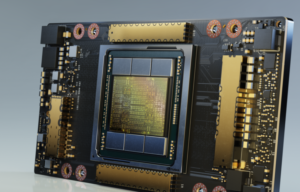
Milvus 2.3 Launches with Support for Nvidia GPUs

(Zapp2Photo/Shutterstock)
Zilliz has beta launched Milvus 2.3, the latest version of its open source vector database. Milvus 2.3 supports Nvidia GPUs which Zilliz says affords greater flexibility and improved real-time workload performance. Zilliz asserts that Milvus 2.3 is as much as 10X faster than Milvus 2.0 when using GPUs and 4X faster with CPUs alone.
The Milvus 2.3 update is timely for the excitement around the expansion of generative AI applications, which is a major use case for vector databases due to the size and complexity of the machine learning models that power AI.
“Vector databases will be essential for organizations building proprietary large language models,” said Nvidia CEO Jensen Huang in his keynote at the GTC developer conference this week.
Embedding vectors are numerical representations of unstructured data objects, such as documents, image components, video frames, or geospatial data. They enable fast, scalable similarity search by finding the nearest matches among similar items. Embeddings are generated by AI models, particularly machine learning or deep learning models trained on vast amounts of data, with much of it unstructured, such as the dataset of text from the internet used to train OpenAI‘s GPT models. The unstructured data is converted into lists of floating point values, creating searchable embeddings.
 Unlike traditional databases with retrofitted vector functionality, Milvus was specifically designed to support AI-powered applications. The database stores, indexes, and manages the billions of embedding vectors generated by machine learning models including large language models, along with convolutional networks, the deep learning algorithms used for purposes like computer vision.
Unlike traditional databases with retrofitted vector functionality, Milvus was specifically designed to support AI-powered applications. The database stores, indexes, and manages the billions of embedding vectors generated by machine learning models including large language models, along with convolutional networks, the deep learning algorithms used for purposes like computer vision.
At its GTC developer conference, Nvidia introduced a new Milvus integration with its RAFT graph acceleration library that contains algorithms for data science, graph, and machine learning. The library accelerates indexing, data loading, and batch retrieval of neighbors in a single query. In addition to Milvus, Nvidia is bringing RAFT to Meta’s FAISS (Facebook AI Similarity Search) library, as well as Redis.
Scaling vector search across billions of embeddings can be computationally intensive. Zilliz claims that Milvus is the first vector database to support heterogeneous computing, uniting CPUs and GPUs to optimize performance for real-time recommendation engines, question-and-answer systems, anomaly detection, image and video search, and other similarity search applications. The Milvus 2.3 release brings heterogeneous compute capabilities to the rearchitected cloud-native Milvus 2 platform, which the company says offers hybrid search, tunable consistency, and always-online operation. This GPU-accelerated Milvus will continue to improve the vector search capabilities for apps powered by ML and AI, Zilliz says.
“Heterogeneous compute is the key to delivering the processing performance required for AI-powered applications,” said Charles Xie, creator of the Milvus project and CEO of Zilliz. “With Milvus’s Nvidia GPU support and RAFT-based integration, that capability is now available at massive scale on CPU and GPU platforms—or both.”
In a release, Zilliz highlighted other notable features of Milvus 2.3. There is change data capture that delivers a continuous feed of database updates for zero-downtime backup and synch, as well as rolling upgrades. Also, there are now nine different supported index types.
Range search is another noteworthy feature, as it enables searching for all vectors within a specified distance, which can be useful for complex data queries. There is also an on-disk index to optimize memory usage.
“Support for Nvidia GPUs in the latest version of Milvus will bring huge benefits of heterogeneous compute to real-time applications,” said Kari Briski, vice president of software product management at Nvidia. “Milvus is a highly performant vector database, and with the massive parallelism of Nvidia GPUs, users can now accelerate compute pipelines.”
Milvus was first released in 2018 and is a Linux Foundation AI & Data graduated-stage project with a large community of contributors and users. Learn more about Milvus 2.3 in this company blog.
Related Items:
Zilliz Vector Database Research Featured at VLDB 2022
Vector Database Company Zilliz Raises $60M to Enhance Cloud Offering
Home Depot Finds DIY Success with Vector Search
































